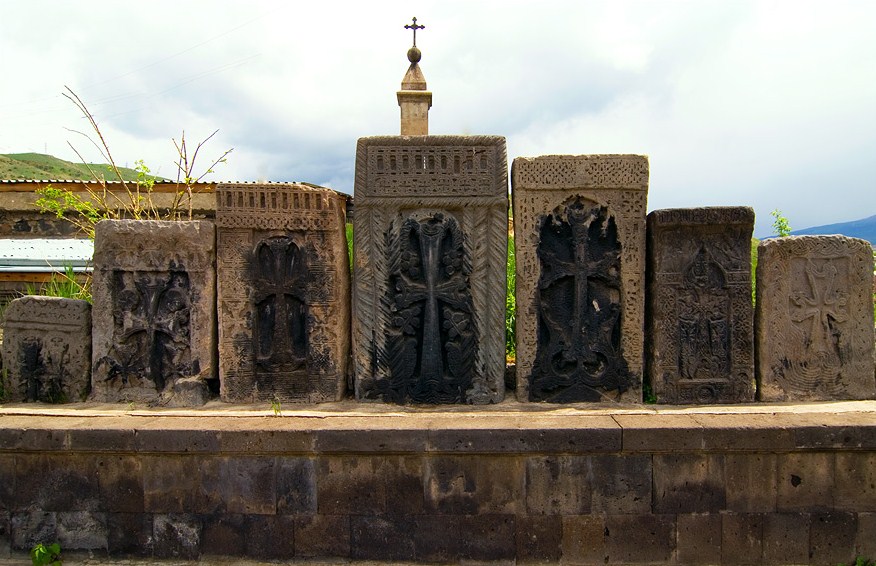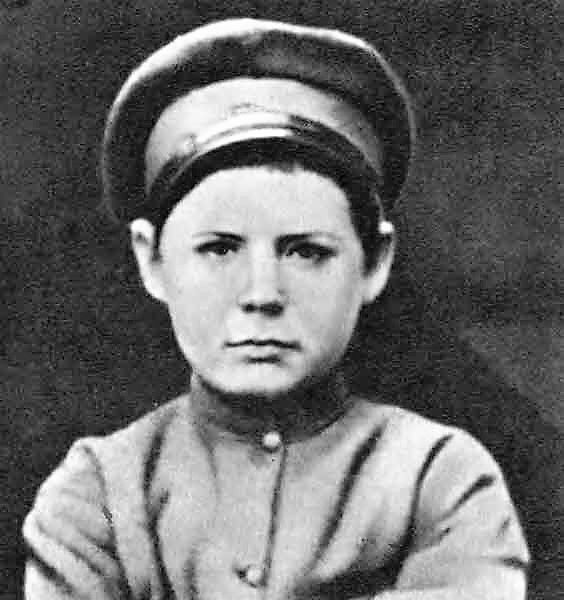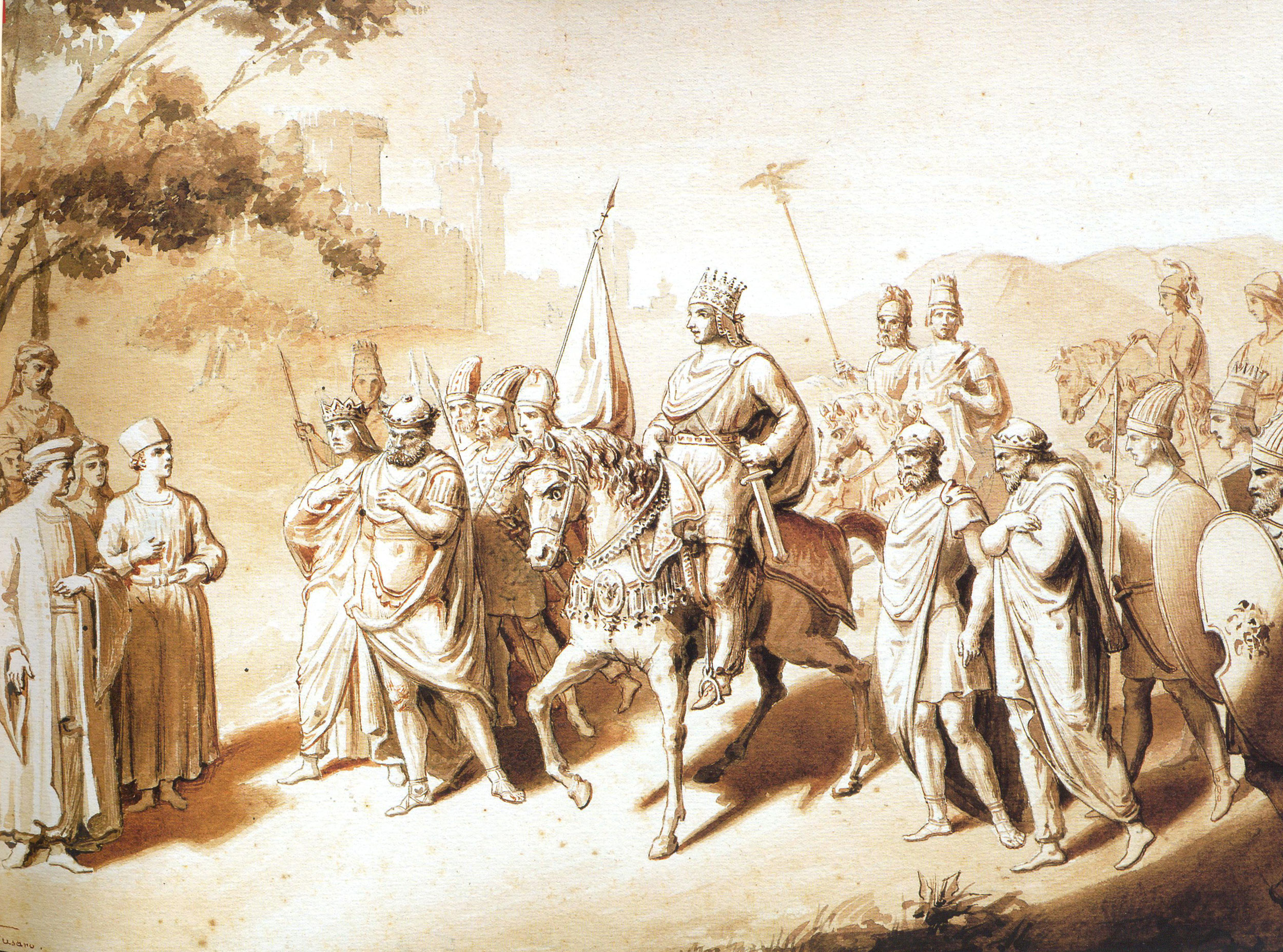|
Hayk Square
Hayk Square ( ''Hayki Hraparak''), is the large central town square in Vanadzor, Armenia. It is intersected by the Tigran Mets Avenue from the southeast the northwest, and the Movses Khorenatsi Street from the northeast. The square was opened during the 1950s, based on the original plan designed by architects Baghdasar Arzoumanian and Hovhannes Margarian. During the Soviet period, the square was known as ''Kirov Square'' (), named after the Bolshevik leader Sergey Kirov. Kirov's statue was standing at the centre of the square until the independence of Armenia. It is envisaged to erect the statues of Hayk Nahapet and Tigranes the Great at the square. Description Hayk square is decorated with several fountains at its central part. It is surrounded with notable buildings: *The Lori Province Lori (, ) is a provinces of Armenia, province (''Administrative divisions of Armenia, marz'') of Armenia. It is located in the north of the country, bordering Georgia (country), Georgia. Va ... [...More Info...] [...Related Items...] OR: [Wikipedia] [Google] [Baidu] |
Vanadzor
Vanadzor (, ) is an urban municipal community and the third largest city in Armenia, serving as the capital of Lori Province in the northern part of the country. It is located about north of the capital Yerevan. As of the 2011 census, the city had a population of 86,199, down from 148,876 reported at the 1979 official census. Currently, the town has a population of approximately 75,186 as of the 2022 census. Vanadzor is the seat of the Diocese of Gougark of the Armenian Apostolic Church. Etymology In the official records of the Russian Empire, the city was labelled as (). Following the Sovietization of Armenia, the city was renamed (, alternatively ') in 1926 after Armenian Bolshevik revolutionary Alexander Miasnikian. In 1935, it was renamed ''Kirovakan'', after the Russian Bolshevik leader Sergey Kirov. A close associate of Miasnikian and Aghasi Khanjian, Kirov had been assassinated on December 1 of the previous year. On 25 June 1992, after Armenia gained its independe ... [...More Info...] [...Related Items...] OR: [Wikipedia] [Google] [Baidu] |
Armenia
Armenia, officially the Republic of Armenia, is a landlocked country in the Armenian Highlands of West Asia. It is a part of the Caucasus region and is bordered by Turkey to the west, Georgia (country), Georgia to the north and Azerbaijan to the east, and Iran and the Azerbaijani exclave of Nakhchivan Autonomous Republic, Nakhchivan to the south. Yerevan is the Capital city, capital, largest city and Economy of Armenia, financial center. The Armenian Highlands has been home to the Hayasa-Azzi, Shupria and Nairi. By at least 600 BC, an archaic form of Proto-Armenian language, Proto-Armenian, an Indo-European languages, Indo-European language, had diffused into the Armenian Highlands.Robert Drews (2017). ''Militarism and the Indo-Europeanizing of Europe''. Routledge. . p. 228: "The vernacular of the Great Kingdom of Biainili was quite certainly Armenian. The Armenian language was obviously the region's vernacular in the fifth century BC, when Persian commanders and Greek writers ... [...More Info...] [...Related Items...] OR: [Wikipedia] [Google] [Baidu] |
Armenian Architecture
Armenian architecture comprises architectural works with an aesthetic or historical connection to the Armenians, Armenian people. It is difficult to situate this architectural style within precise geographical or chronological limits, but many of its monuments were created in the regions of historical Armenia, the Armenian Highlands. The greatest achievement of Armenian architecture is generally agreed to be its medieval churches and seventh century churches, though there are different opinions precisely in which respects. Common characteristics of Armenian architecture Medieval architecture, Medieval Armenian architecture, and Armenian churches in particular, have several distinctive features, which some believe to be the first national style of a church building. [...More Info...] [...Related Items...] OR: [Wikipedia] [Google] [Baidu] |
Russian Architecture
The architecture of Russia refers to the architecture of modern Russia as well as the architecture of both the original Kievan Rus', the Russian principalities, and Imperial Russia. Due to the geographical size of modern and Imperial Russia, it typically refers to architecture built in European Russia, as well as European influenced architecture in the conquered territories of the Empire. The vernacular architecture stems from wooden construction traditions, and monumental masonry construction started to appear during the Kievan Rus’ era in what is now modern Ukraine. After the Mongol invasion of Rus, the Russian architectural trajectory continued in the principalities of Novgorod, Vladimir-Suzdal, Pskov, Muscovy, and the succeeding states of the Tsardom of Russia. Much of the early standing architectural tradition in Russia stems from foreign influences and styles. Among the characteristic styles present in Russian architecture are the Byzantine revival style of the Kieva ... [...More Info...] [...Related Items...] OR: [Wikipedia] [Google] [Baidu] |
Neoclassical Architecture
Neoclassical architecture, sometimes referred to as Classical Revival architecture, is an architectural style produced by the Neoclassicism, Neoclassical movement that began in the mid-18th century in Italy, France and Germany. It became one of the most prominent architectural styles in the Western world. The prevailing styles of architecture in most of Europe for the previous two centuries, Renaissance architecture and Baroque architecture, already represented partial revivals of the Classical architecture of Roman architecture, ancient Rome and ancient Greek architecture, but the Neoclassical movement aimed to strip away the excesses of Late Baroque and return to a purer, more complete, and more authentic classical style, adapted to modern purposes. The development of archaeology and published accurate records of surviving classical buildings was crucial in the emergence of Neoclassical architecture. In many countries, there was an initial wave essentially drawing on Roman archi ... [...More Info...] [...Related Items...] OR: [Wikipedia] [Google] [Baidu] |
Town Square
A town square (or public square, urban square, city square or simply square), also called a plaza or piazza, is an open public space commonly found in the heart of a traditional town or city, and which is used for community gatherings. Related concepts are the civic center, the market square and the village green. Most squares are hardscapes suitable for open market (place), markets, concerts, political rallies, and other events that require firm ground. They are not necessarily a true square, geometric square. Being centrally located, town squares are usually surrounded by small shops such as Bakery, bakeries, meat markets, cheese stores, and clothing stores. At their center is often a well, monument, statue or other feature. Those with fountains are sometimes called fountain squares. The term "town square" (especially via the term "public square") is synonymous with the politics of many cultures, and the names of a certain town squares, such as the Euromaidan or Red Squar ... [...More Info...] [...Related Items...] OR: [Wikipedia] [Google] [Baidu] |
Baghdasar Arzoumanian
Baghdasar Arzoumanian (; January 1, 1916 – November 19, 2001) was an Armenian architect and designer based in Yerevan, Armenia. He designed a large body of civil and religious buildings as well as many smaller works. Education and background Arzoumanian was born in Mutsk, Syunik Province, Armenia. From 1928 to 1936 he studied at the Technical School. In 1938 he was admitted to the Constructions Department of the Institute for Polytechnical Sciences of Yerevan. In 1942 he entered the Soviet army and took part in World War II. He served in the army until 1946 when he returned to Yerevan to continue his studies. He graduated from the Institute in 1949. During his professional career he worked with the Yerevan Project Institute and the Armenian Church headquarters in Etchmiadzin. He died on November 19, 2001, in Yerevan. Civil buildings Arzoumanian is the architect of many civil buildings in Armenia. Below are some of his most important buildings: * City hall of Vanadzor and H ... [...More Info...] [...Related Items...] OR: [Wikipedia] [Google] [Baidu] |
Sergey Kirov
Sergei Mironovich Kirov (born Kostrikov; 27 March 1886 – 1 December 1934) was a Russian and Soviet politician and Bolshevik revolutionary. Kirov was an early revolutionary in the Russian Empire and a member of the Bolshevik faction of the Russian Social Democratic Labour Party. Kirov became an Old Bolshevik and personal friend to Joseph Stalin, rising through the Communist Party of the Soviet Union ranks to become head of the party in Leningrad and a member of the Politburo. On 1 December 1934, Kirov was shot and killed by Leonid Nikolaev at his offices in the Smolny Institute. Nikolaev and several alleged accomplices were convicted in a show trial and executed less than 30 days later. Kirov's assassination was used by Stalin as a reason for starting the Moscow trials and the Great Purge. Early life Sergei Mironovich Kostrikov was born on in Urzhum in Vyatka Governorate, Russian Empire, as one of seven children born to Miron Ivanovich Kostrikov and Yekaterina Kuzmini ... [...More Info...] [...Related Items...] OR: [Wikipedia] [Google] [Baidu] |
Hayk
Hayk (, ), also known as Hayk Nahapet (, , ), is the legendary patriarch and founder of the Armenian nation. His story is told in the ''History of Armenia'' attributed to the Armenian historian Movses Khorenatsi and in the ''Primary History'' traditionally attributed to Sebeos. Fragments of the legend of Hayk are also preserved in the works of other authors, as well as in Armenian folk tradition. Etymology The name of the patriarch, ''Hayk'' (), is not exactly homophonous with the Armenian name for "Armenia," ''Haykʻ'' (). In Classical Armenian, ''Haykʻ'' is the nominative plural of ''hay'' ( հայ), the Armenian word for "Armenian." While Robert W. Thomson considers the etymology of ''Haykʻ'' (Հայք) from ''Hayk'' (Հայկ) to be impossible, other scholars consider the connection between the two to be obvious and derive ''Hayk'' from ''hay''/''Haykʻ'' via the suffix ''-ik''. Martirosyan, Hrach (2010). ''Etymological Dictionary of the Armenian Inherited Lexicon'' ... [...More Info...] [...Related Items...] OR: [Wikipedia] [Google] [Baidu] |
Tigranes The Great
Tigranes II, more commonly known as Tigranes the Great (''Tigran Mets'' in Armenian language, Armenian; 140–55 BC), was a king of Kingdom of Armenia (antiquity), Armenia. A member of the Artaxiad dynasty, he ruled from 95 BC to 55 BC. Under his reign, the Armenian kingdom expanded beyond its traditional boundaries and reached its peak, allowing Tigranes to claim the title Great King or King of Kings. His empire for a short time was the most powerful state to the east of the Roman Republic. Either the son or nephew of Artavasdes I of Armenia, Artavasdes I, Tigranes was given as a hostage to Mithridates II of Parthia after Armenia came under Parthian suzerainty. After ascending to the Armenian throne, he rapidly expanded his kingdom by Military Campaigns of Tigranes the Great, invading or annexing Roman and Parthian client-kingdoms. Tigran decided to ally with Mithridates VI Eupator, Mithridates VI of Pontus by marrying his daughter Cleopatra of Pontus, Cleopatra. At its height, ... [...More Info...] [...Related Items...] OR: [Wikipedia] [Google] [Baidu] |
Lori Province
Lori (, ) is a provinces of Armenia, province (''Administrative divisions of Armenia, marz'') of Armenia. It is located in the north of the country, bordering Georgia (country), Georgia. Vanadzor is the capital and largest city of the province. Other important towns include Stepanavan, Alaverdi, Armenia, Alaverdi, and Spitak. It is home to the UNESCO World Heritage Sites of Haghpat and Sanahin Monastery, Sanahin monasteries and the well-preserved Akhtala monastery. The province was heavily damaged during the 1988 Armenian earthquake. The province is served by the Stepanavan Airport. Etymology The name Lori (Լոռի) is of Armenian origin (from Armenian "quail"), first appeared in the 11th century when King David I Anhoghin founded the fortified city of Lori Berd Fortress, Lori. The fortress-city became the capital of the Kingdom of Tashir-Dzoraget in 1065. The name Lori later spread through the region and replaced the original name of Tashir. Geography Situated at the north ... [...More Info...] [...Related Items...] OR: [Wikipedia] [Google] [Baidu] |
Buildings And Structures In Vanadzor
A building or edifice is an enclosed structure with a roof, walls and windows, usually standing permanently in one place, such as a house or factory. Buildings come in a variety of sizes, shapes, and functions, and have been adapted throughout history for numerous factors, from building materials available, to weather conditions, land prices, ground conditions, specific uses, prestige, and aesthetic reasons. To better understand the concept, see ''Nonbuilding structure'' for contrast. Buildings serve several societal needs – occupancy, primarily as shelter from weather, security, living space, privacy, to store belongings, and to comfortably live and work. A building as a shelter represents a physical separation of the human habitat (a place of comfort and safety) from the ''outside'' (a place that may be harsh and harmful at times). buildings have been objects or canvasses of much artistic expression. In recent years, interest in sustainable planning and building practi ... [...More Info...] [...Related Items...] OR: [Wikipedia] [Google] [Baidu] |







